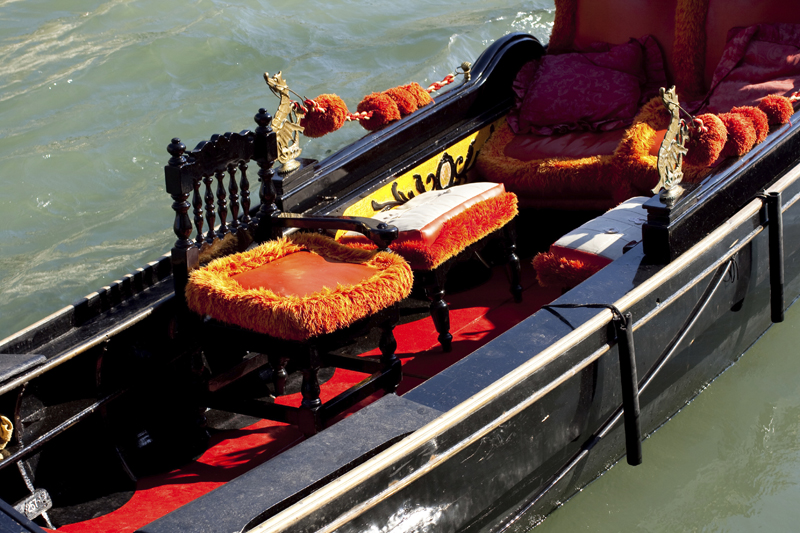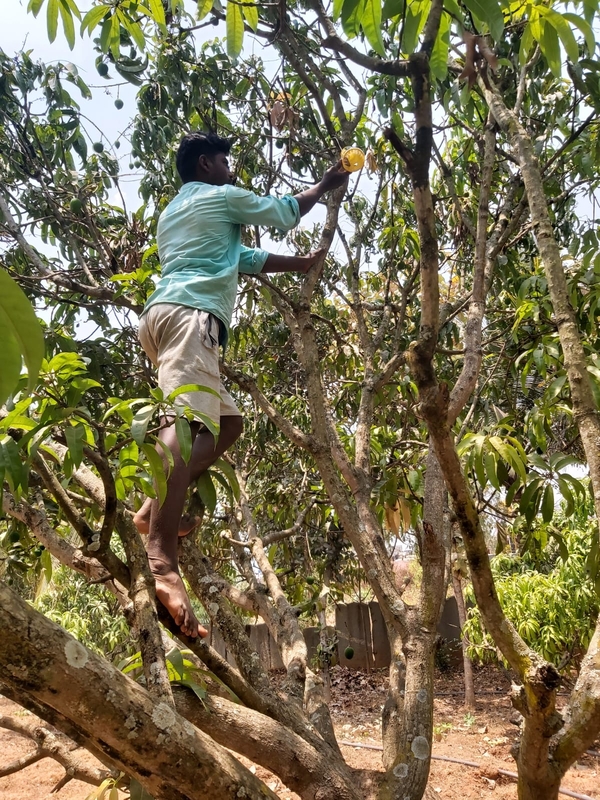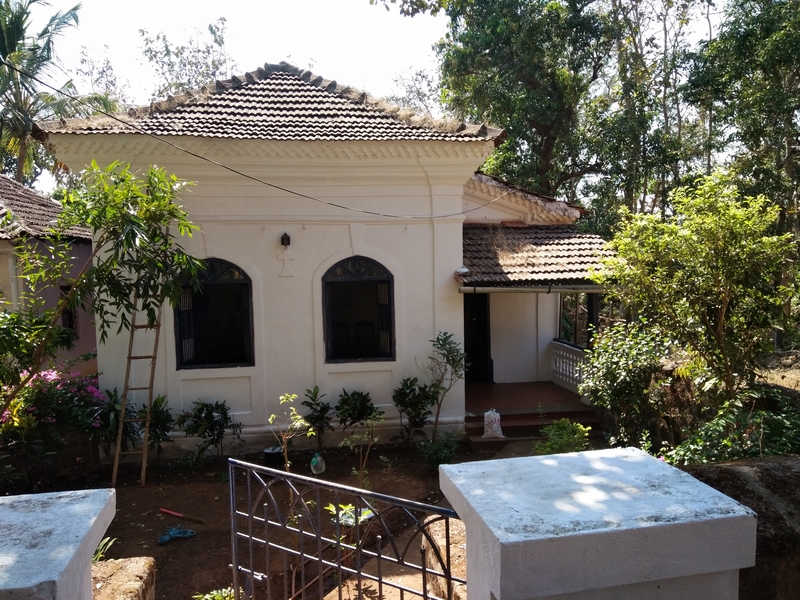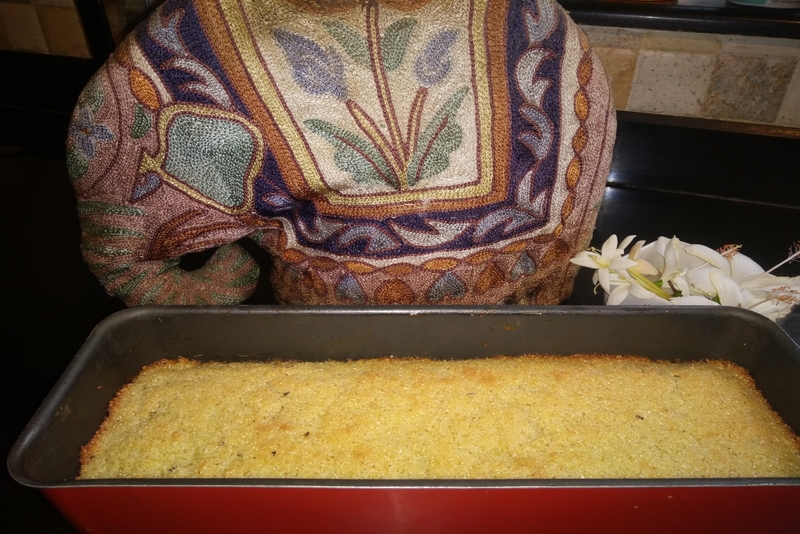Pochampally- Bhoodan Movement

We stoop to enter the low roofed hut. Bharatha Ramadas sits in his vest, hunched up on the cold granite floor of his tiny hut, transforming silk yarn into a fabulous new design. Next to him lies a drawing of an intricate pattern of leaves spiralling up the stalk of a creeper which is the new design he has created for an Ikkat Saree. I am in Pochampalli which is 45 km from the capital city of Hyderabad in Andhra Pradesh. The rest of the hut is dark and shadowy but Ramdas sits bathed in natural light from an intriguing opening in his roof.
We had come to visit Bhoodan Pochampally where the famous national Bhoodan (land donation) movement led by Acharya Vinobha Bhave had its birth place in Pochampally in 1951. The village pachayat members recounted the story of how Vinobha Bhave after completion of the Sarvodaya Conference in Shivarampally, visited Pochampally as part of his walk through Telengana. Telegana was the nerve centre of intense communist activities over land distribution in those days. As Vinobha walked through the village 40 landless families of what was considered the lowest caste, surrounded him and explained that only if they were given land, could they be helped out of poverty.
Vinobha felt helpless but during a prayer meeting that he held later that day he spoke about the problem which the 40 families faced. The prayer meeting drew thousands of villagers from across the state. Without expecting any response, Vinobha said, “ Brothers, is there anyone among you who can help these 40 families?” Vedire Ramachandra Reddy a rich farmer stood up and said, “ I am ready to give 100 acres to these families!” Vinobha was further astounded that the families accepted only 80 acres at 2 acres each and would not accept the rest.
As the story goes over the next seven weeks during his Telengana walk, he collected 12 thousand acres and this movement in turn spread across the country as the famous Bhoodan Movement which inspired land reforms which had remained archaic from colonial times. The land can never be sold and Ramadas is the heir of the original owner of the Bhoodan.
“This hut will be over 50 years old and my ancestors had the foresight to plan our huts so that we worked with natural light to safe guard our eyes. Ours is very intricate work and even with all the care we take with our eyes, most of us lose our sight in our mid forties,” explains Ramadas who is in his early forties. He is busy working over silk yarn which is stretched on a frame, tying rubber strips to it.
The whole process is very intricate, since Ikkat weaving is the interlacing of the warp and weft on which the design is pre-planned. “ It take three days for me to make a simple design, but a week for this kind of intricate pattern,” he reveals.
I walk to the other side of the hut is Ramadas’s, loom. He starts weaving to show us his art, the spindle flying up and down deftly between the threads. A grey piece of cloth covers what he is weaving to keep it clean from the dust and anything which might drop on it from above. Requesting him to uncover his work we are stunned with the softly glowing pearl grey silk saree he is weaving with a bright vermilion border. The foreigners in our group squat on the floor entranced with his creation.
Walking back to the bus on the dusty village roads with its little half naked children running around happily in the muck, my mind goes to the serendipitious visit that Acharya Vinobha Bhave made which changed the fortunes of this little village forever.
The writer visited Pochampally as a media fellow under the aegis of the IASC 2011
We had come to visit Bhoodan Pochampally where the famous national Bhoodan (land donation) movement led by Acharya Vinobha Bhave had its birth place in Pochampally in 1951. The village pachayat members recounted the story of how Vinobha Bhave after completion of the Sarvodaya Conference in Shivarampally, visited Pochampally as part of his walk through Telengana. Telegana was the nerve centre of intense communist activities over land distribution in those days. As Vinobha walked through the village 40 landless families of what was considered the lowest caste, surrounded him and explained that only if they were given land, could they be helped out of poverty.
Vinobha felt helpless but during a prayer meeting that he held later that day he spoke about the problem which the 40 families faced. The prayer meeting drew thousands of villagers from across the state. Without expecting any response, Vinobha said, “ Brothers, is there anyone among you who can help these 40 families?” Vedire Ramachandra Reddy a rich farmer stood up and said, “ I am ready to give 100 acres to these families!” Vinobha was further astounded that the families accepted only 80 acres at 2 acres each and would not accept the rest.
As the story goes over the next seven weeks during his Telengana walk, he collected 12 thousand acres and this movement in turn spread across the country as the famous Bhoodan Movement which inspired land reforms which had remained archaic from colonial times. The land can never be sold and Ramadas is the heir of the original owner of the Bhoodan.
“This hut will be over 50 years old and my ancestors had the foresight to plan our huts so that we worked with natural light to safe guard our eyes. Ours is very intricate work and even with all the care we take with our eyes, most of us lose our sight in our mid forties,” explains Ramadas who is in his early forties. He is busy working over silk yarn which is stretched on a frame, tying rubber strips to it.
The whole process is very intricate, since Ikkat weaving is the interlacing of the warp and weft on which the design is pre-planned. “ It take three days for me to make a simple design, but a week for this kind of intricate pattern,” he reveals.
I walk to the other side of the hut is Ramadas’s, loom. He starts weaving to show us his art, the spindle flying up and down deftly between the threads. A grey piece of cloth covers what he is weaving to keep it clean from the dust and anything which might drop on it from above. Requesting him to uncover his work we are stunned with the softly glowing pearl grey silk saree he is weaving with a bright vermilion border. The foreigners in our group squat on the floor entranced with his creation.
Walking back to the bus on the dusty village roads with its little half naked children running around happily in the muck, my mind goes to the serendipitious visit that Acharya Vinobha Bhave made which changed the fortunes of this little village forever.
The writer visited Pochampally as a media fellow under the aegis of the IASC 2011

Related Articles
Editor's Picks Articles
Top Ten Articles
Previous Features
Site Map
Content copyright © 2023 by Marianne de Nazareth. All rights reserved.
This content was written by Marianne de Nazareth. If you wish to use this content in any manner, you need written permission. Contact Marianne de Nazareth for details.





 -resizeimage.jpg.jpg)

